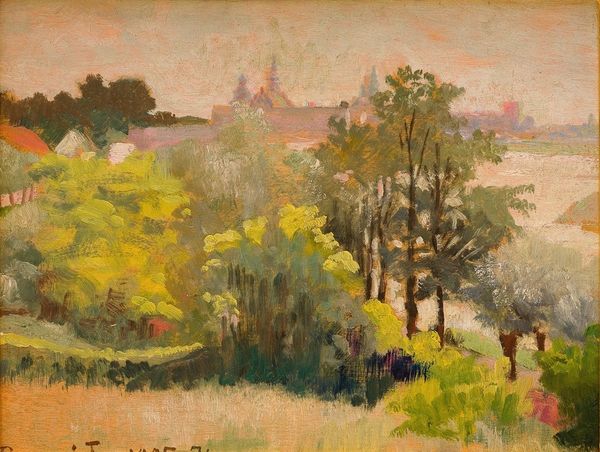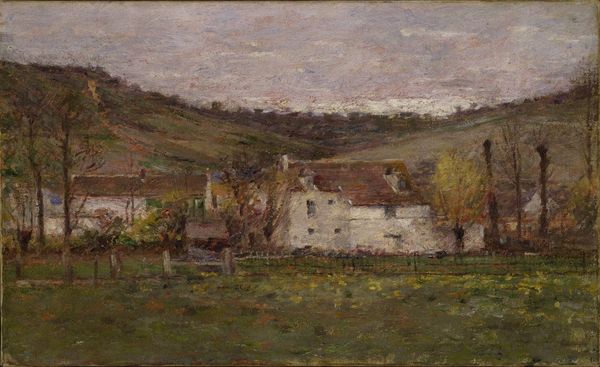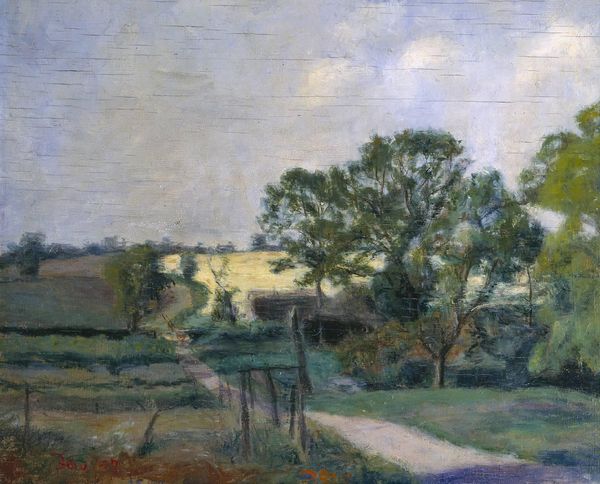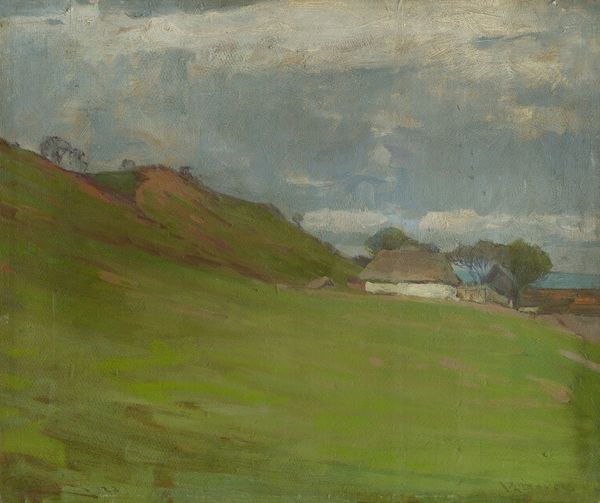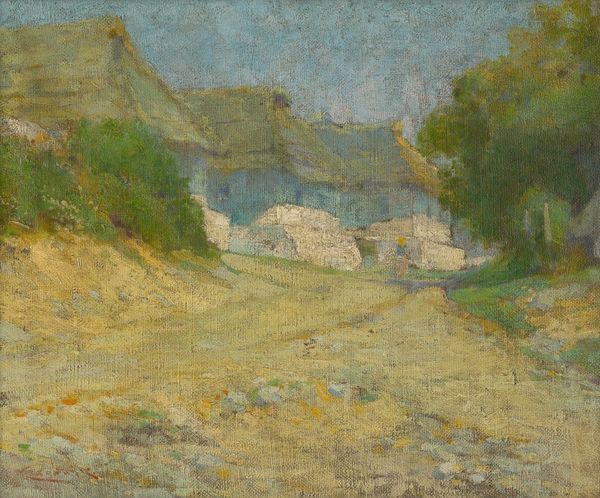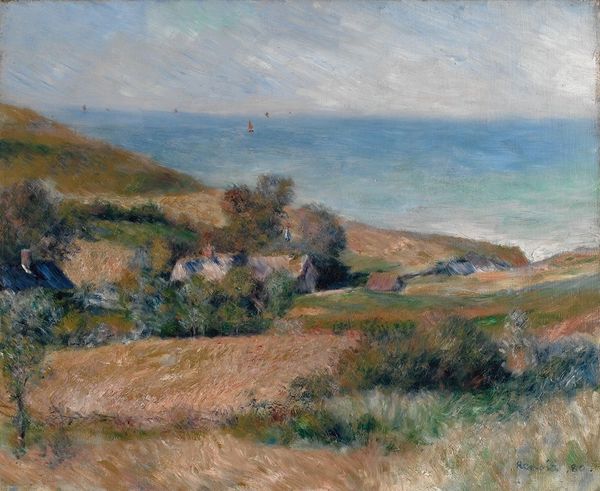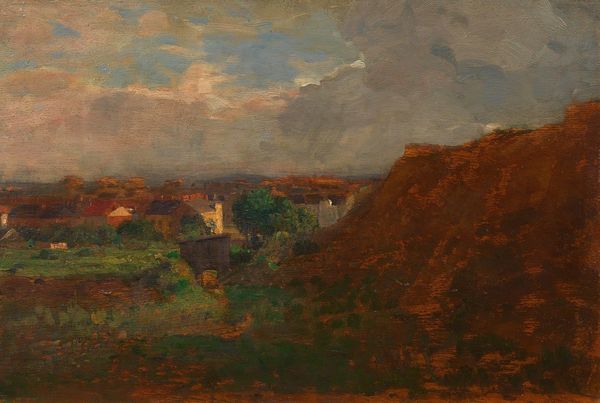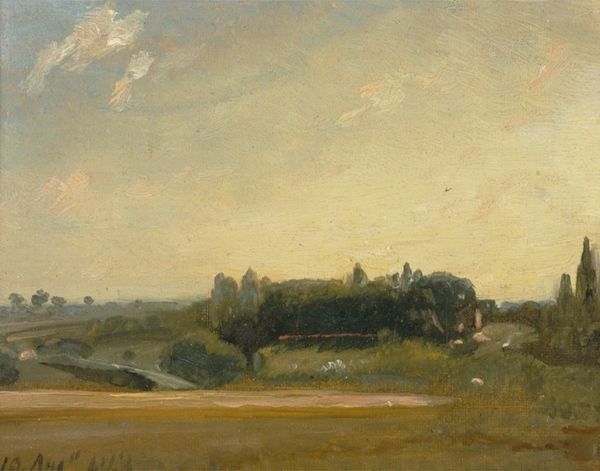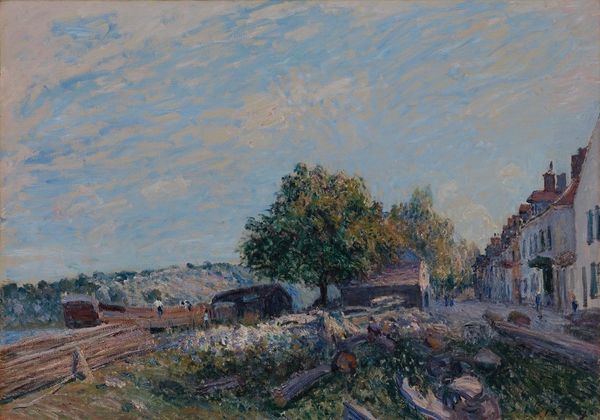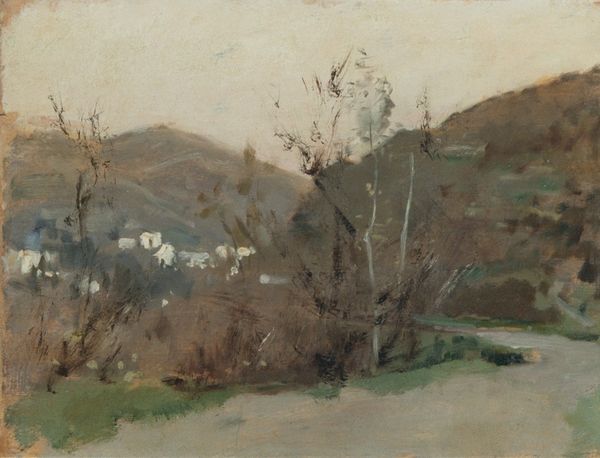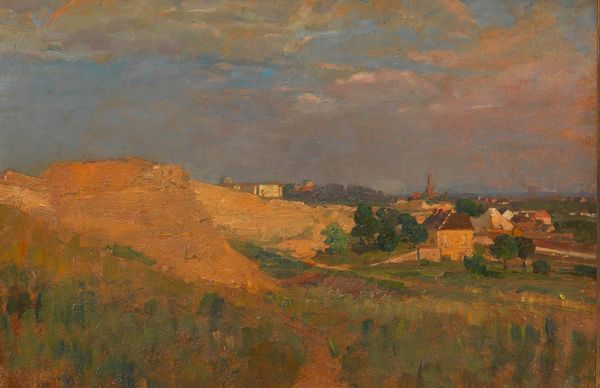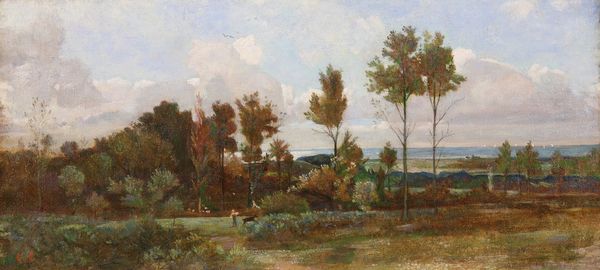
Copyright: Public Domain: Artvee
Editor: This is "Maisons Au Pied D’une Falaise," Houses at the Foot of a Cliff, by Edgar Degas, made around 1895 to 1898 using oil paint. It feels very subdued, almost muted. The houses seem nestled into the landscape, but there’s a sense of… oppression, maybe? What do you see in this piece, particularly considering the period it was created in? Curator: It's fascinating you pick up on a sense of oppression. Looking through the lens of historical context, late 19th-century France was a period of intense social and political upheaval. While Impressionism celebrated fleeting moments of beauty, Degas, particularly later in his career, seems to hint at a more complex, and perhaps even critical, view of modern life. Consider the landscape – not an idealized pastoral scene, but a rather claustrophobic view of buildings almost swallowed by the earth. Who might have inhabited those houses, and what were their experiences? Editor: So, you’re suggesting this landscape might be less about nature and more about the people and the power structures that shaped their lives? The way the houses seem almost consumed by the hill really speaks to that now. It feels less idyllic and more like a statement on class or societal pressures. Curator: Exactly. Think about who controlled land, resources, and even artistic representation. Degas was part of a privileged class, yet this painting offers a glimpse into the lives potentially constrained by that very system. Is he offering social commentary or just personal observations? Is he explicitly thinking of power? Maybe it's about the female figures in his dance scenes or bathers, all placed within contexts that both revealed and, arguably, re-inscribed gendered social hierarchies. Can we separate these contexts? Editor: That connection to his other works adds a whole new layer! I initially saw a landscape, but now I'm thinking about the human element and Degas's broader engagement with social issues and representation. It really forces us to ask whose stories are being told and from what perspective. Curator: Precisely. Art isn’t created in a vacuum. By questioning the power dynamics inherent in seemingly simple scenes, we can begin to understand the complex interplay between art, society, and individual experience. I wonder what these cliffs have seen over time. Editor: Definitely something to think about. I'll never look at a "simple landscape" the same way again.
Comments
No comments
Be the first to comment and join the conversation on the ultimate creative platform.
